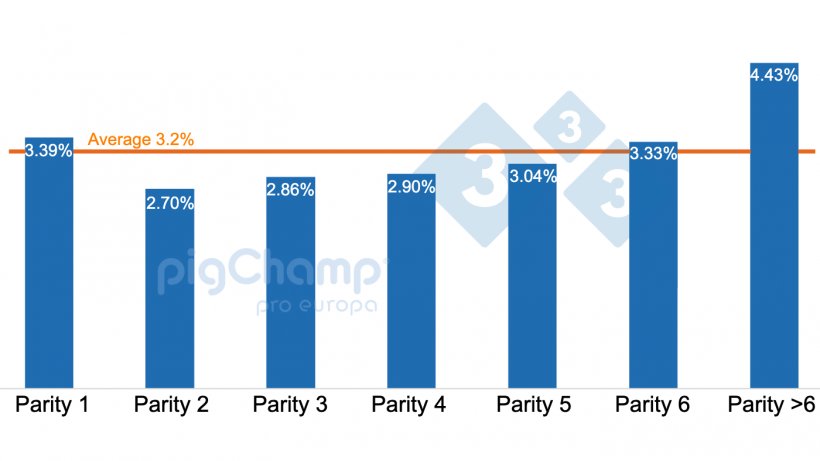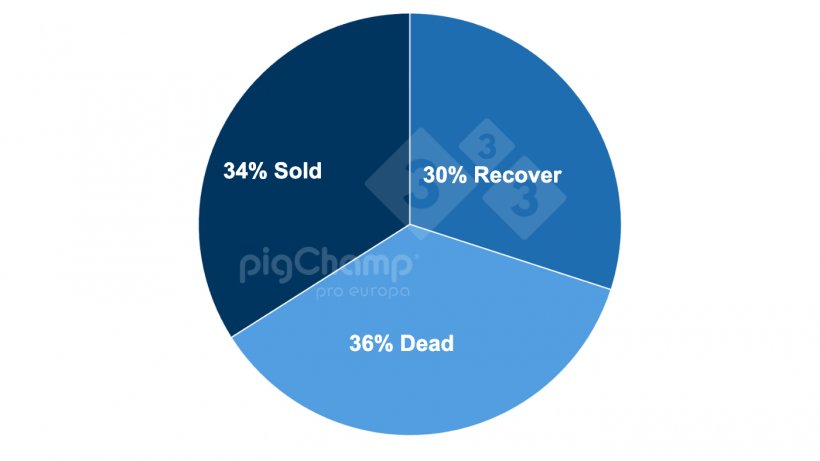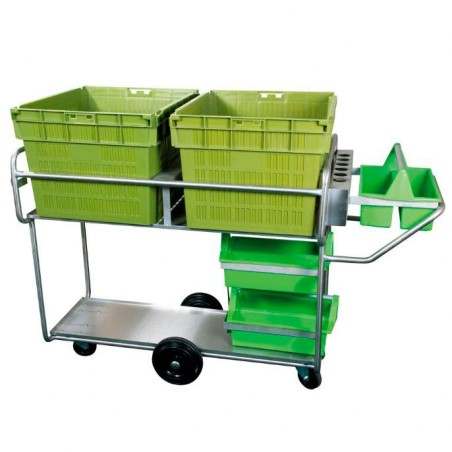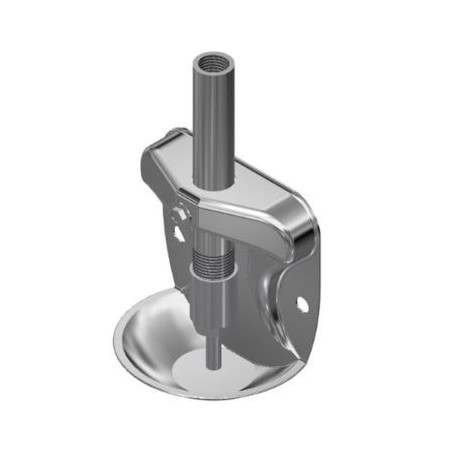One of the major problems occurring in farrowing units is sows failing to wean any piglets due to problems during farrowing or lactation which forces all piglets to be removed from them. This problem is even more relevant in today's context of pig production, where increasing prolificacy makes it increasingly difficult to provide all piglets with a functional teat for the entire lactation.
We will analyze these sows using the PigCHAMP Pro Europa database. First, the evolution of the percentage of sows that have weaned zero piglets over the last 5 years is analyzed. In general, we can see the percentage of sows that have had to wean zero piglets is increasing, except for the stabilization of the last year. Therefore, although these percentages are low, we can define this as a growing problem.

Table 1. Percentage of weanings with 0 piglets by 12-month periods, July 16-June 21
| Jul 16 - Jun 17 | Jul 17 - Jun 18 | Jul 18 - Jun 19 | Jul 19 - Jun 20 | Jul 20 - Jun 21 | Average | |
|---|---|---|---|---|---|---|
| Total weanings (nº) | 490,595 | 522,747 | 548,547 | 599,773 | 624,866 | 557,306 |
| Weaning 0 piglets (nº) | 11,808 | 14,969 | 16,101 | 20,310 | 19,992 | 16,636 |
| Weaning 0 piglets (%) | 2.41% | 2.86% | 2.94% | 3.39% | 3.20% | 2.99% |
Looking at the results for the period July 20-June 21, the distribution of the percentage of these sows by parity number is shown below. The percentage increases beginning with parity 2, reaching its highest point in the old sows (parity greater than 6). This is to be expected since older sows normally have more difficulties farrowing (longer farrowing, uterine prolapse), and these problems farrowing can lead to a bad start of lactation, and finally to the sow not being able to rear piglets. But note the percentage of first parity sows that end up weaning zero piglets. This percentage is probably also related to problems- either issues adapting to the farrowing stalls, or problems during farrowing (narrow birth canal, others). In this case, the problem affects sows from which almost no return on investment has yet been made since their purchase or development.

Graph 1. Percentage of sows weaning zero piglets categorized by parity, weanings July 20-June 21.
- die
- be sent to the slaughterhouse
- recover and continue producing.
The following graph shows the distribution by the final destination of these sows. Practically one-third goes to each destination, that is, only 30% of the sows that wean zero piglets recover. As for the average age of these sows, those that are sent to slaughter are older (parity 4.9), while those that recover are younger (parity 3.0). As for those that die, their age is intermediate, parity 3.7. Graph 2. Distribution of sows weaning zero piglets by subsequent destination, weaning period July 20-June 21.
Finally, if we compare the subsequent performance of sows that recover after weaning zero piglets with that of sows that did wean piglets, we see that:
- Their wean to first service interval is much higher (14.6 days versus 6.0): the intention is to give the sows time to recover from the problem they suffered in the farrowing unit, and to line up their service interval to that of a mating batch.
- Their performance in the following parity is clearly lower in:
- gestation (73% farrowing rate vs. 84.5%)
- farrowing (15.8 total born vs. 16.3)
- and weaning (11.4 weaned vs. 12.3).
- Importantly, a significant percentage of sows that wean 0 piglets wean 0 piglets again in their next parity (9.5%, compared to 3.0% in the rest of the sows.
Table 2. Performance in the subsequent parity by number of piglets weaned, weaning period July 20-June 21
| Weaning 0 | Weaning > 0 | |
|---|---|---|
| Nº sows serviced (nº) | 5,897 | 548,152 |
| Average age (parity) | 3.0 | 3.4 |
| Wean to first service interval (days) | 14.6 | 6.0 |
| Returns (%) | 14.3 | 8.4 |
| Farrowing rate (%) | 73.0 | 84.5 |
| Total born (average) | 15.8 | 16.3 |
| Born alive (average) | 14.1 | 14.6 |
| Stillborn (average) | 1.4 | 1.3 |
| Mummies (average) | 0.4 | 0.4 |
| Weaned/sow (average) | 11.4 | 12.3 |
| % Weaning 0 piglets | 9.5 | 3.0 |
Finally, the reasons why a sow ultimately has to be weaned without piglets are quite varied: from sudden death in the farrowing unit to various causes that give rise to major difficulties in lactation, such as pathological problems, serious problems with conformation, poor environmental control in the farrowing room (especially high temperatures), or dystocia from which the sow does not adequately recover.
In summary, we can affirm that sows that fail to wean piglets in the farrowing unit represent a growing problem, and one that is difficult to solve, since sows that try to recover after weaning without piglets have a clearly lower performance than the rest and a significant possibility of failing again in lactation. Of course, this is a general conclusion and each producer must verify this against data from their farms in order to make data-based decisions about whether or not to keep these sows on the farm. In addition, since the chances of recovery vary according to the cause and level of severity, the decision to continue keeping this type of sow on the farm must also be based on an individual assessment.








